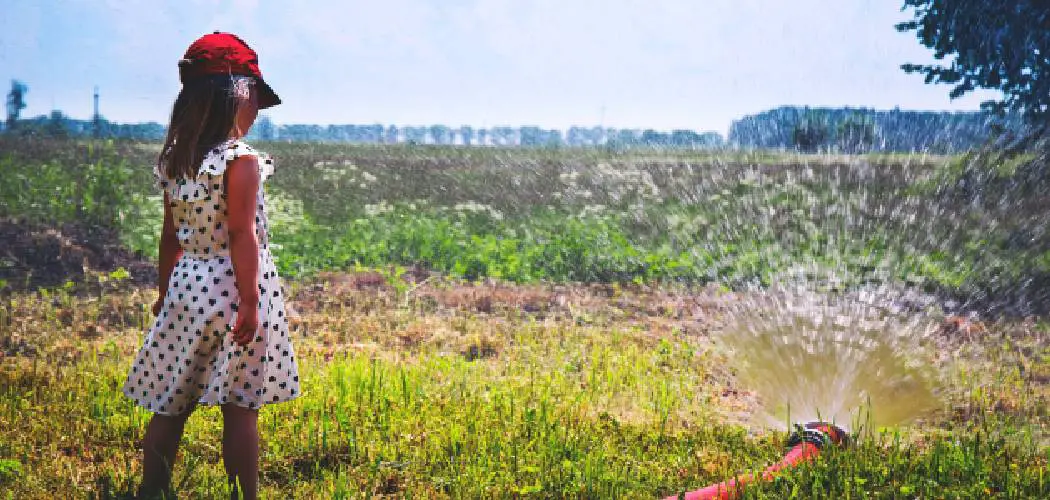Are you looking for an easy, cost-effective way to make sure your lawn is watered consistently? If so, you are probably considering using sprinklers. But did you know that there is another method of watering your grass that can save time and money?
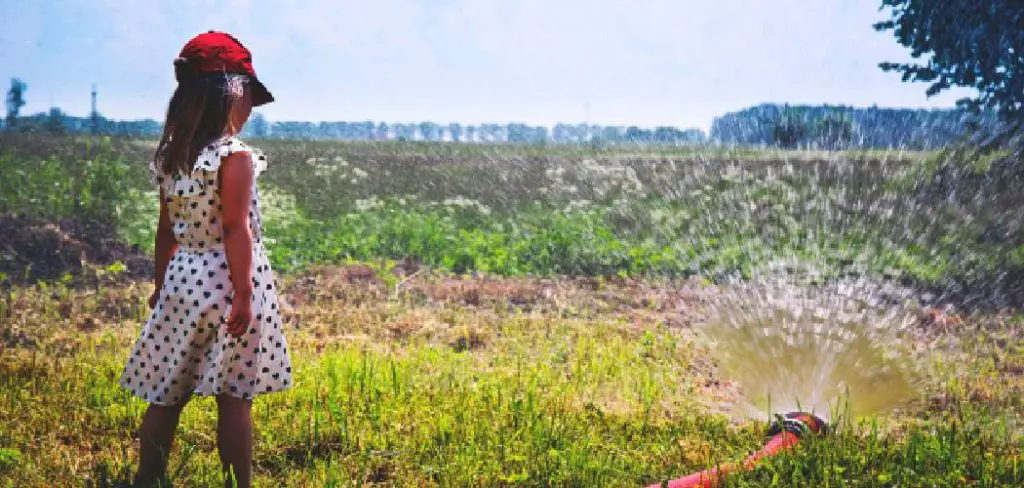
In this blog post, we will explore how to water grass without sprinklers – giving you the lush, green yard of your dreams while minimizing potential stress and effort! Read on to learn how an alternative soft irrigation system can revolutionize the way you tend to and maintain your lawn!
10 Best Ways on How to Water Grass Without Sprinklers
1. Install a Drip Irrigation System:
Drip irrigation is an effective way to water your lawn without sprinklers. It involves laying tubing and emitters throughout your yard, slowly releasing water directly onto the soil around your grassroots. This results in less water waste and more efficient watering. Installing a drip irrigation system may require some upfront investment, but it can save you money in the long run through water conservation and reduced watering costs.
2. Utilize Soaker Hoses:
Similar to drip irrigation, soaker hoses release water directly onto the soil around your grassroots. These hoses are made of porous material that allows water to seep out gradually. They are an inexpensive alternative to drip irrigation and can easily be moved around your yard as needed. This method is particularly beneficial for newly seeded lawns, as it ensures even watering and promotes healthy root growth.
3. Use a Sprinkler Wand:
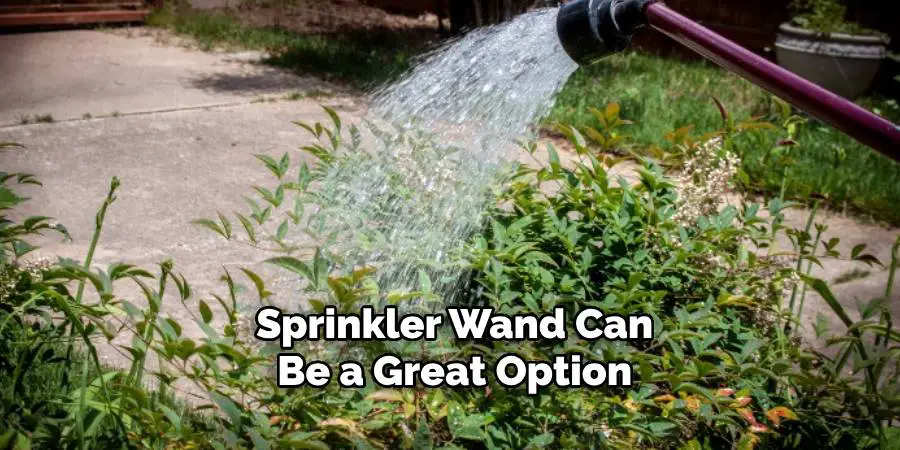
If you have a small lawn or specific areas that need more targeted watering, a sprinkler wand can be a great option. These handheld devices allow you to control where the water goes and are ideal for areas with delicate plants or flowers that may not fare well under traditional sprinkler systems. Just be sure to move the wand around to ensure even coverage.
4. Create Your Own Sprinkler:
If you have a larger lawn and want a more hands-off approach, consider creating your own DIY sprinkler using items you already have at home. One option is to poke holes in a recycled plastic bottle and attach it to a garden hose. This will create a makeshift sprinkler with adjustable pressure. You can also use a large tarp or shower curtain and poke holes in the top, then place it over your lawn and turn on the water for an improvised sprinkler system.
5. Install a Rain Barrel:
Another eco-friendly option is to collect rainwater in a barrel and use it for watering your lawn. Not only does this save water, but rainwater is also free of chemicals found in tap water that can be damaging to your lawn over time. Additionally, many cities offer incentives or discounts for installing rain barrels.
6. Water Early in the Morning:
No matter what method you choose, it’s important to water your lawn early in the morning. This is when temperatures are cooler and there is less wind, meaning less evaporation and more efficient watering. It also allows the water to soak into the soil before the sun gets too hot, reducing the risk of fungal diseases.
7. Adjust Watering Frequency:
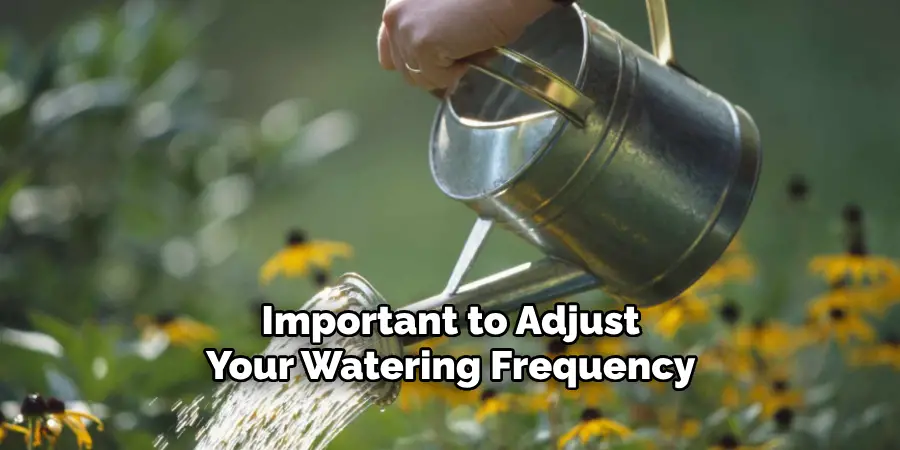
It’s important to adjust your watering frequency based on weather conditions and the needs of your lawn. During periods of heavy rain, you may not need to water at all, while during hot and dry spells, you may need to increase your watering frequency. Pay attention to the condition of your lawn and adjust accordingly.
8. Use Native Plants:
Consider planting native plants in your yard, as they are naturally adapted to the climate and require less water. This can help reduce the amount of watering needed and make your yard more sustainable. Using native plants can also attract local wildlife, making your yard a welcoming oasis for pollinators and other beneficial animals.
9. Mulch Your Lawn:
Adding mulch to your lawn can help retain moisture, reducing the need for frequent watering. It also helps regulate soil temperature and suppresses weed growth. Choose organic mulches such as shredded leaves or grass clippings, as they will break down over time and nourish your soil. This can save both time and money compared to purchasing and installing traditional sprinklers.
10. Practice Proper Lawn Care:
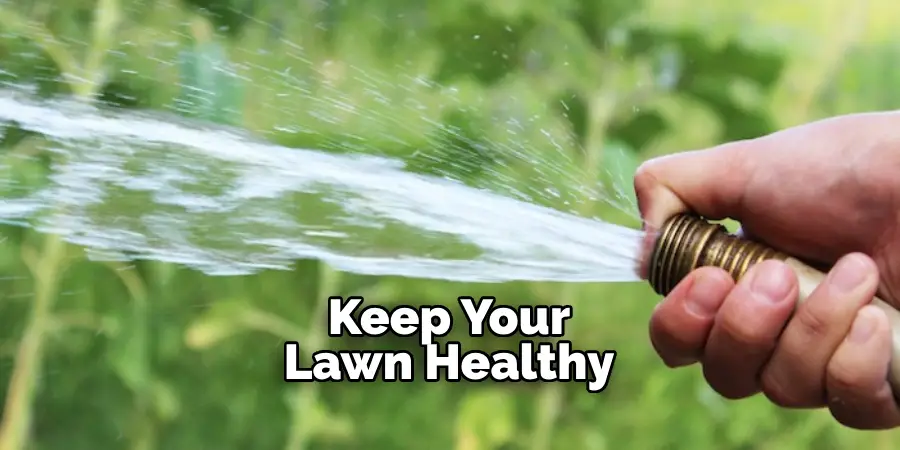
Finally, the best way to keep your lawn healthy and reduce the need for excessive watering is to practice proper lawn care. This includes regular mowing at the correct height, aerating the soil, and fertilizing as needed. A healthy lawn with strong roots can better withstand periods of drought and require less watering overall.
Following these tips, you can easily water your grass without sprinklers and still achieve a lush, beautiful lawn. Whether you choose to install an irrigation system or opt for DIY methods, there are plenty of alternatives to traditional sprinkler systems that will save time, money, and water. So why not give them a try and see the difference they make in your yard? Happy watering!
Additional Tips and Tricks to Water Grass Without Sprinklers
1. If you have a large lawn or garden, consider using a soaker hose instead of sprinklers. Soaker hoses are porous and release water slowly into the soil, providing an even watering experience. They also save water compared to traditional sprinklers.
2. Invest in a rain barrel to collect rainwater for your gardening needs. Rainwater is free from chemicals like chlorine and fluoride, making it a healthier option for your plants. Use this water to hand-water your grass or fill up a watering can for targeted watering.
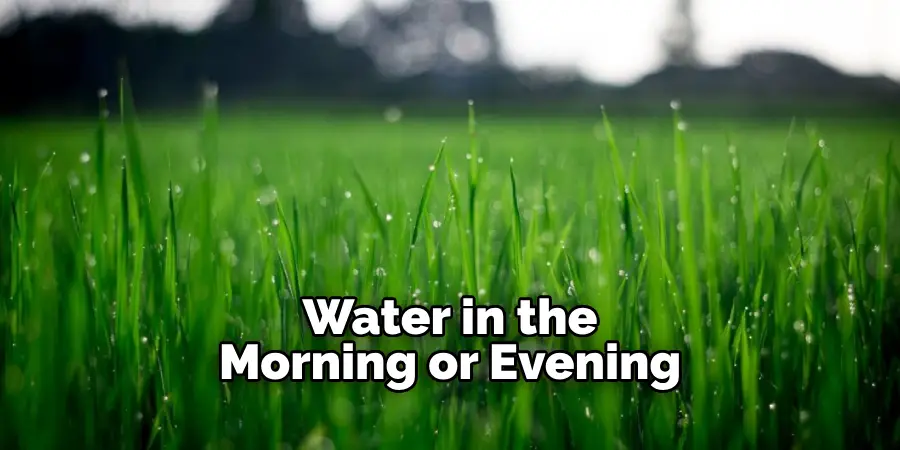
3. Water in the morning or evening when temperatures are cooler and there is less evaporation. This will ensure that more water reaches the roots of your grass rather than being lost to the air.
4. When using sprinklers, make sure they are properly adjusted to avoid wasting water. Adjust the angle and range to ensure that only your grass is being watered, and not the surrounding pavement or buildings.
5. Avoid over-watering your grass as it can lead to shallow roots and promote weed growth. Instead, aim for deep watering once or twice a week, depending on the type of grass you have.
6. Use mulch around your grass to retain moisture in the soil and reduce the need for frequent watering. Mulch also helps to prevent weeds from growing, saving you time and effort.
7. Consider using a drip irrigation system for precise and efficient watering. Drip irrigation delivers water directly to the roots of your plants, reducing water loss due to evaporation or runoff.
8. Know your soil type and water accordingly. Sandy soils require more frequent watering, while clay soils can hold onto moisture for longer periods.
9. When hand-watering, use a watering wand or nozzle to control the flow of water and avoid wasting it in areas that don’t need it.
Following these additional tips and tricks can help you maintain a healthy, lush lawn without relying on sprinklers. Experiment with different methods to find what works best for your specific lawn and climate conditions. With a little extra effort and attention, you can keep your grass looking green and vibrant without the use of traditional sprinkler systems. Happy gardening!
Things You Should Consider to Water Grass Without Sprinklers
1. Choose the Right Time of Day:
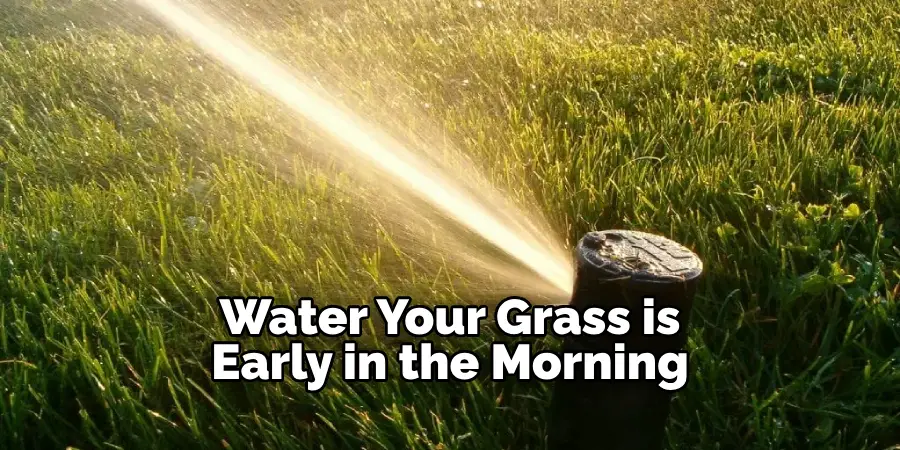
Timing is key when it comes to watering your lawn without sprinklers. The best time to water your grass is early in the morning, between 4 a.m. and 9 a.m. This allows for maximum absorption of water before the sun gets too hot and evaporates it. Watering during the day or in the evening can lead to water wastage and potential damage to your grass due to over-saturation.
2. Water Less Frequently but More Deeply:
Instead of watering your lawn every day, opt for a less frequent but deeper watering schedule. This will encourage the roots of your grass to grow deeper into the soil in search of water, making them stronger and more resilient. Shallow watering can result in weak and shallow-rooted grass, making it more vulnerable to drought and other stresses.
3. Use a Soaker Hose:
A soaker hose is an efficient way to water your lawn without using sprinklers. This type of hose releases water slowly directly onto the soil, reducing evaporation and ensuring that the water reaches the roots of your grass. Soaker hoses are also great for targeting specific areas in your lawn that may require more water.
4. Utilize Watering Cans or Drip Irrigation:
If you have a small lawn, using watering cans or drip irrigation can be a cost-effective and environmentally friendly way to water your grass. This method allows you to control the amount of water being used and can be directed to specific areas that need it the most.
5. Consider Collecting Rainwater:
Another alternative to watering grass without sprinklers is by collecting rainwater. You can install a rain barrel or use buckets to collect rainwater and use it to water your lawn during dry periods. This not only saves on your water bill but also reduces the strain on municipal water supplies. Rainwater is also more beneficial for your grass as it does not contain any added chemicals found in tap water.
6. Monitor the Moisture Level:
It’s important to keep an eye on the moisture level of your soil when watering without sprinklers. One way to do this is by using a moisture meter, which can be inserted into the soil to determine its moisture content. This will prevent overwatering and ensure that your grass is receiving the right amount of water for healthy growth.
7. Adjust Based on Weather and Season:
The frequency and amount of watering should be adjusted according to the weather conditions and season. During hot summer months, your lawn may require more frequent watering, while cooler seasons may require less water. It’s important to be flexible and adjust your watering schedule accordingly to ensure the health of your grass.
Following these considerations can help you maintain a healthy and green lawn without the use of sprinklers. Remember to always be mindful of water usage and conservation, and make adjustments as needed based on your specific lawn’s needs.
With proper care, you can achieve a lush, green lawn without relying on sprinkler systems. So go ahead and give these methods a try – your grass will thank you! So don’t be afraid to experiment and find the best watering techniques for your specific lawn. With a little bit of effort, you can have a beautiful lawn without the need for sprinklers. Happy watering!
Conclusion
Knowing how to water grass without sprinklers is a valuable skill to have, especially during times of drought or when facing water restrictions. By following the tips and techniques outlined in this document, you can ensure that your lawn stays healthy and well-hydrated without the use of sprinklers.
In addition to saving water, learning alternative methods of watering grass also has environmental benefits. Sprinklers can contribute to excessive runoff and water waste, which can harm local ecosystems. By using more targeted methods of watering, such as drip irrigation or soaker hoses, you can reduce your environmental impact.

